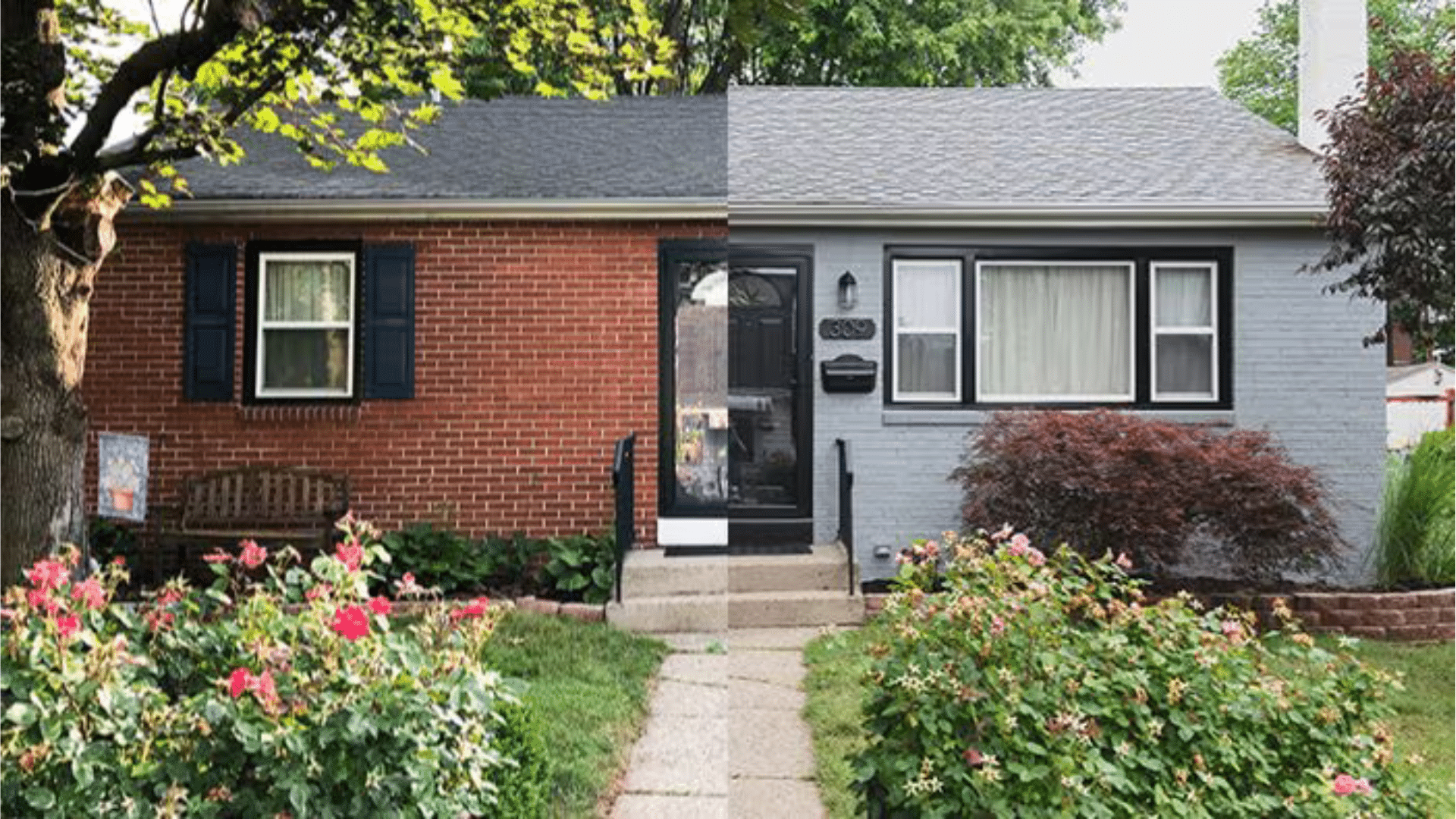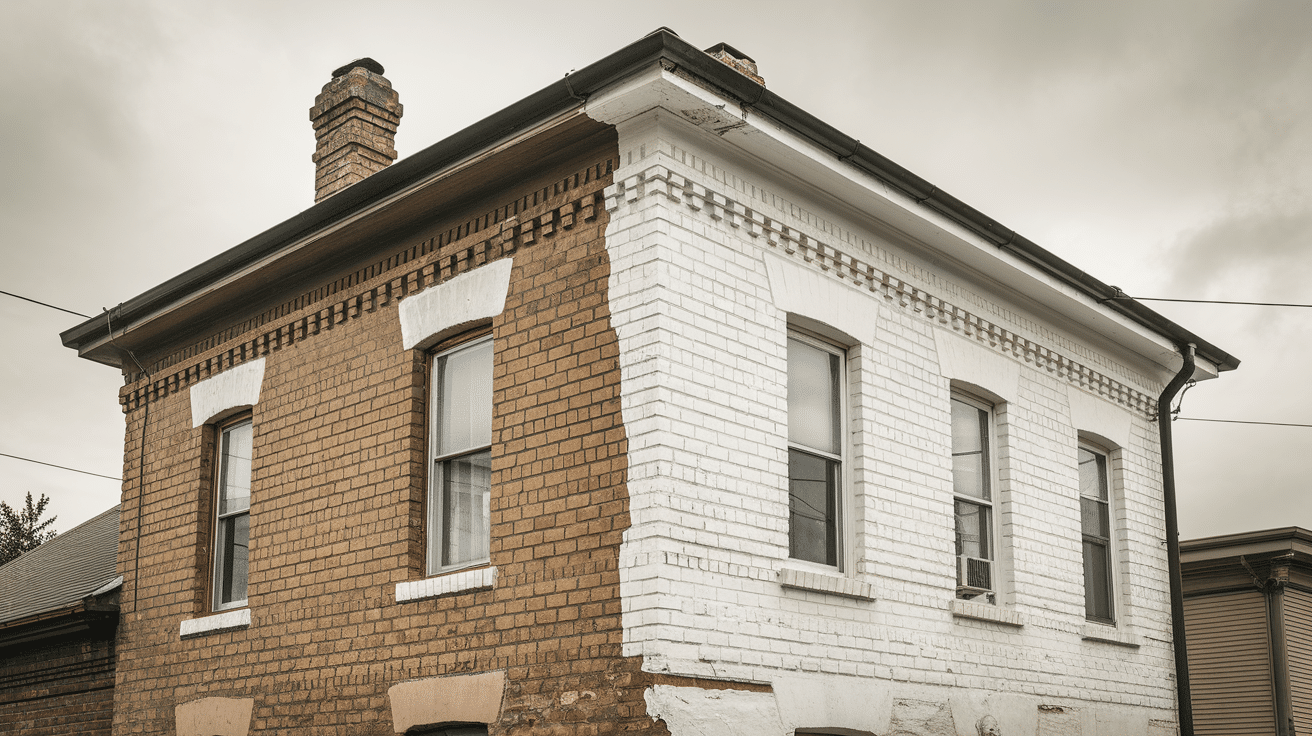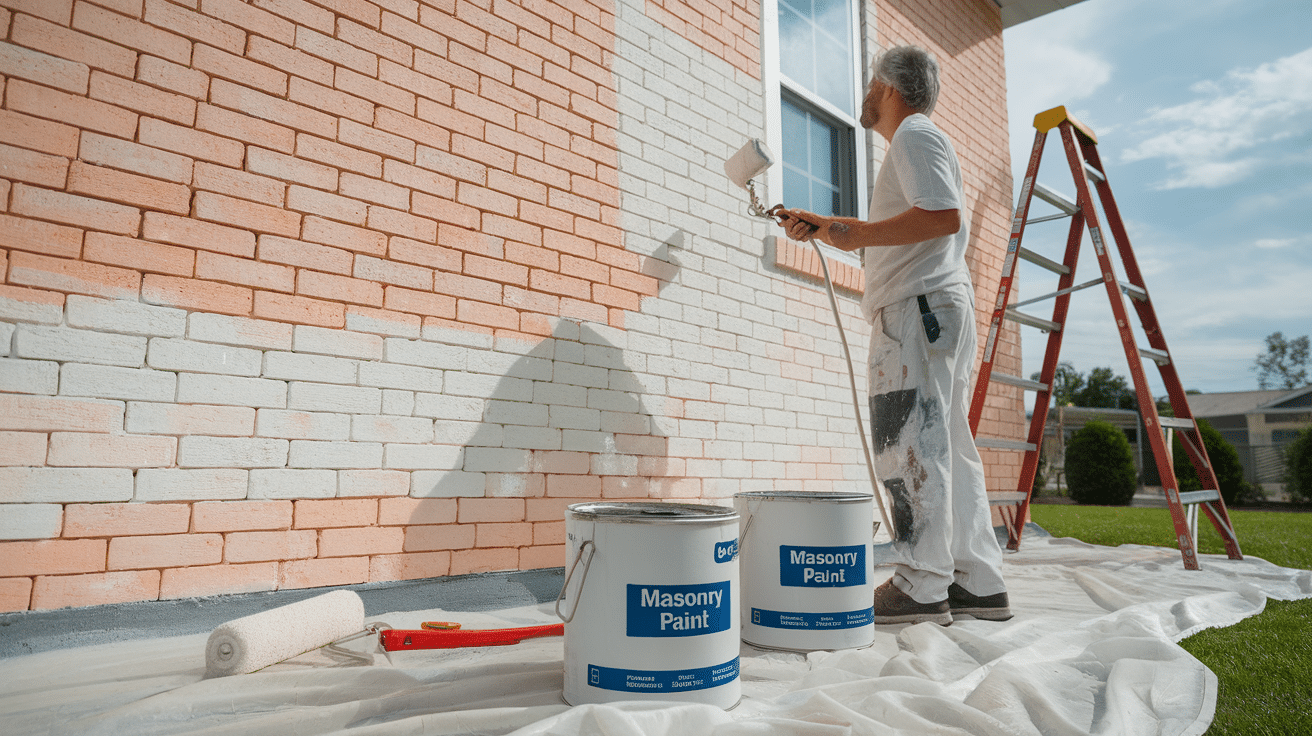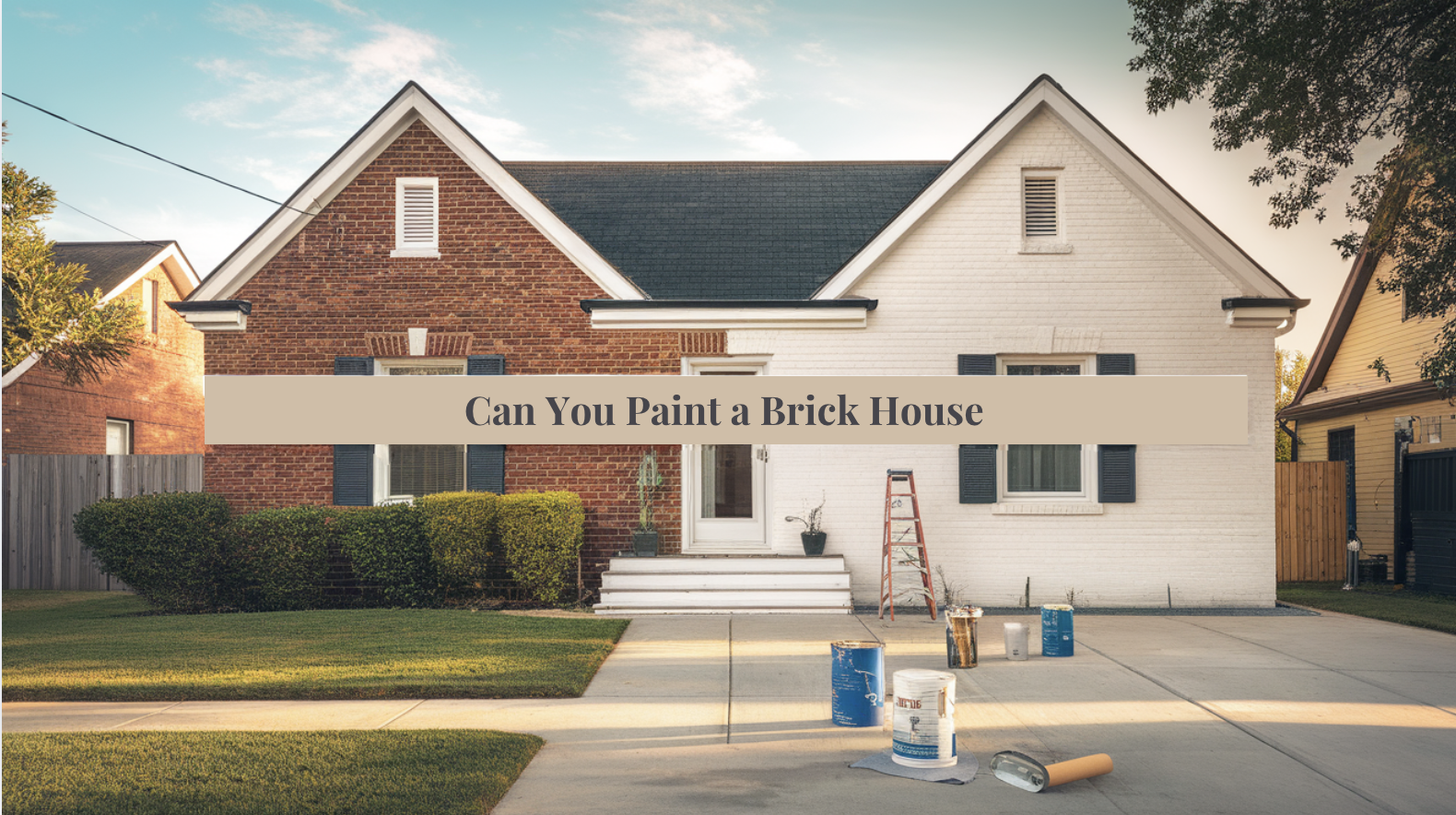Have you been thinking about painting your brick house? I used to wonder the same thing. I liked the look of natural brick, but part of me wanted a cleaner, more updated style.
If you’re unsure about it, you’re not alone. Many homeowners ask the same question: Is it worth it? What are the risks? Is it a smart move for your home in the long run?
Thinking about painting your brick home can feel like a big decision. I’ve been there, too—unsure if it was the right move, worried about making a mistake.
That’s why I put this guide together. I want you to feel confident before picking up a paintbrush or calling a contractor.
Whether you’re looking for a fresh look, trying to fix old brick, or just weighing your options, this guide will give you the facts in a simple, no-nonsense way.
In this guide, I’ll walk you through:
- The pros of painting a brick house
- The cons (yes, there are a few)
- How to make the right choice for your home
- Helpful tips if you decide to move forward
- Common mistakes to avoid
I’ll keep it simple, honest, and based on real-life experience. There will be no fluff—just useful advice.
The Pros of Painting a Brick House

Painting your brick can give your home a whole new life. It’s one of the most noticeable changes you can make to your exterior—and often one of the most satisfying.
Whether you’re going for a clean, crisp style or something more bold and modern, paint gives you the flexibility to shape your home’s personality. Here are the biggest benefits:
1. Clean, Modern Look
Paint can hide years of wear and give your home a fresh, updated feel. Over time, brick can become stained, faded, or look tired from years of exposure to the elements.
Painting it gives your home a renewed presence that feels polished and cared for. A white or soft gray painted brick home stands out in the best way—it has clean lines, even color, and a finished appearance.
2. Boosts Curb Appeal
A painted home often looks more intentional and tidy. A uniform base color makes it easier to match other design elements like shutters, doors, and landscaping.
If you’re planning to sell, painted brick can grab attention in listing photos and make your home stand out on the block
3. Covers Stains and Flaws
Over time, brick can develop mineral stains, dirt buildup, and patches from previous repairs. These flaws can make the whole house look worn out.
Paint creates an even surface that hides imperfections and gives the exterior a clean slate. This is especially helpful for older homes or houses where bricks were replaced in different batches and colors don’t match
4. Added Protection
The right kind of paint does more than improve the look of your home—it adds a layer of defense against the weather.
Rain, sun, and freezing temperatures can slowly wear down unprotected surfaces
5. More Color Control
Natural brick has a fixed tone—usually red, brown, or orange—which might not work with your style or other features of your home. With paint, you’re not limited.
Want something light and airy? Choose soft whites or pale grays. Prefer a bold contrast? Try dark charcoal or navy.
The Cons of Painting a Brick House

Painting brick might seem like a quick way to update your home’s appearance, but it comes with several significant drawbacks:
1. It’s Permanent
Once you paint brick, there’s no easy way to go back. Stripping paint from brick is expensive and not always successful.
Even professional methods like sandblasting or chemical stripping can damage the brick underneath. This is a long-term choice, so it’s worth making sure you’re fully committed to the look before starting.
2. Traps Moisture if Done Wrong
Brick needs to breathe. If paint traps moisture inside, it can lead to mold, crumbling, or cracks. Moisture problems often happen when the wrong type of paint is used, like oil-based paint that seals the surface too tightly.
Even if the brick looks fine at first, trapped moisture can build up over time and slowly cause damage underneath the paint.
3. Needs Upkeep
Natural brick is very low maintenance. Painted brick? Not so much. Once paint is applied, you’re adding another layer that needs regular upkeep. Over time, paint can chip, fade, or peel—especially if your home is exposed to strong sun, rain, or freezing temperatures.
Depending on the quality of the materials and your local climate, you’ll likely need to repaint every 5–10 years. It’s also important to inspect painted brick regularly for signs of wear, especially around corners and joints.
4. Can Lower Value (in Some Areas)
In some historic neighborhoods, painting brick is discouraged or even frowned upon. Local rules or preservation guidelines may prevent you from making changes to the exterior of your home, especially if it’s considered part of a protected area.
Common Mistakes to Avoid
Painting brick can go wrong if you’re not careful. While it might seem like a simple project, there are a few common slip-ups that can lead to a poor finish—or worse, damage to your home.
1. Skipping Prep Work
Prep work is the foundation of a good paint job. If you skip cleaning or priming, your paint won’t stick well. Over time, this leads to peeling, cracking, or bubbling—especially in high-exposure areas like chimneys or south-facing walls.
Take the time to clean the brick thoroughly and apply a masonry primer made to grip rough, porous surfaces. It might feel like an extra step, but it’s what makes the difference between paint that lasts and paint that flakes off in a year.
2. Using the Wrong Paint
Avoid regular house paint. You need paint designed for masonry—something breathable that allows moisture to escape. Over time, that moisture builds up and can cause blistering, mildew, or even structural issues.
Always use a breathable paint made for masonry or mineral-based surfaces. These paints are designed to let water vapor escape while still protecting your home from rain and weather.
3. Painting Damp or Dirty Brick
The brick must be completely clean and dry. Moisture under the paint leads to long-term damage. If you paint over dirt, dust, or algae, you’re sealing in that debris. And if the brick is still wet from washing or rain, that trapped moisture can lead to peeling or cracks later.
4. Not Testing the Color
Always test your paint in a small area first. Light can change how it looks. What seemed like a soft gray may turn bluish in daylight. Always test a small patch of your chosen color on the actual brick.
Check it at different times of day to see how the light affects it. This small step helps you avoid expensive regrets after painting an entire house.
Smart Tips for Painting Brick the Right Way

If you decide to paint, start with a solid prep—clean thoroughly, let it dry, and use the right primer. Choose breathable masonry paint and apply it on a mild, dry day for the best results.
1. Clean the Surface Well
Use a gentle cleaner or low-pressure wash to remove dirt, mildew, algae, and stubborn stains from the brick carefully. Avoid harsh chemicals or high-pressure washers, as these can damage the brick’s surface.
Work methodically from the top down, gently scrubbing any tough spots. Once clean, rinse thoroughly to ensure all residue is gone. Allow the brick to dry completely—this may take 24–48 hours—before applying primer or paint.
2. Use Breathable Paint
Choose a paint specifically made for masonry or mineral surfaces. These paints are designed to allow moisture to escape, so regular house paint won’t provide the breathability your brick home needs.
Breathable masonry paint prevents moisture from getting trapped behind the surface, reducing the risk of mold, mildew, or structural damage.
Mineral-based paints are another excellent option; they bond chemically to the brick, creating a durable, breathable finish that resists peeling. Investing in the right paint helps your brick look great for years and protects your home’s structure long-term.
3. Prime First
Primer is essential because it helps your paint adhere firmly to the brick surface, creating a smooth, durable base. Without primer, paint can peel, chip, or fade prematurely, especially on porous surfaces like brick.
Priming also seals the brick, preventing old stains or uneven coloring from bleeding through your fresh coat of paint.
While it might seem like an extra step, priming ultimately saves you time and money by ensuring your paint job looks better and lasts longer. Don’t skip this crucial step if you want professional-quality results.
4. Pick the Right Weather
Always choose a dry, mild day for painting your brick home, ideally with temperatures between 50°F and 85°F. Extreme heat can cause paint to dry too quickly, leading to cracks or uneven coverage.
Cold weather slows drying time and may prevent paint from properly curing, causing it to peel later. High humidity traps moisture under the paint, creating bubbles or blisters over time.
Checking the forecast and selecting moderate, consistent weather conditions ensures the best, most durable finish for your home’s exterior.
5. Don’t Forget Tools
For the best results, use a paint sprayer to get even, smooth coverage over large brick surfaces—it’s fast and helps reach into tiny crevices.
If you prefer rolling, choose a roller with a thick nap (at least ¾ inch) so it can grip the rough texture of brick. A roller works well for medium-sized areas and offers better control in tight spots.
Use a brush to cut in along edges, corners, trim, and around windows. Combining these tools ensures complete, consistent coverage with a clean, finished look.
Conclusion
So, can you paint a brick house? Yes, you absolutely can—but only if you’re confident it’s the right decision for your home, your style, and your maintenance comfort level.
Once the paint goes on, there’s no turning back. Stripping it off is costly, time-consuming and often damages the brick underneath. That’s why it’s so important to weigh the pros and cons carefully before you start.
When it’s done right, though, painting your brick can completely transform the look of your home. It hides years of wear and tear, gives your exterior a crisp, clean finish, and adds a personal touch that reflects your taste.
Whether you want a cozy white cottage look, a bold modern statement, or something in between, paint opens up a world of style options that natural brick can’t offer.
Here’s what to remember:
- Painting brick looks great, but it’s not reversible
- It requires solid prep and the right materials
- It will need upkeep down the road
If you’ve been thinking about it for a while, now might be the time to take that step.
Frequently Asked Questions
How Long Does Painted Brick Last?
With proper prep, high-quality paint, and regular upkeep, painted brick can last 7 to 10 years. In areas with mild weather, it can last even longer with minimal fading or chipping.
Is It Better to Spray or Roll Paint on Brick?
Spraying covers faster and more evenly, especially on rough brick. But rolling helps work paint into grooves and is better for tight or small areas. Many people use both for best results.
What Type of Paint Should I Use?
Use breathable masonry paint or mineral-based paint made for brick. These allow moisture to escape and prevent peeling. Avoid oil-based or standard exterior paints—they trap moisture.

